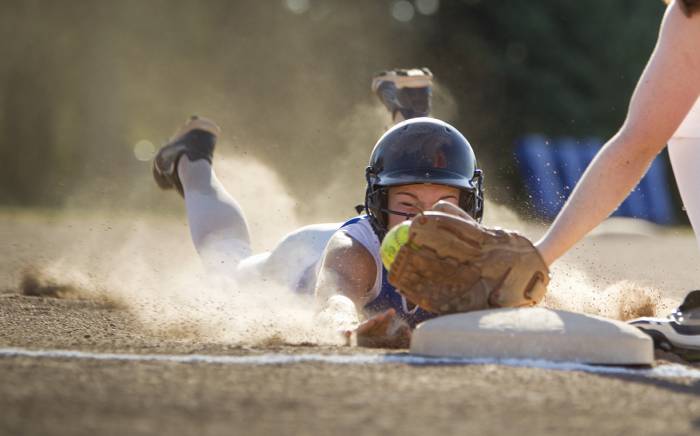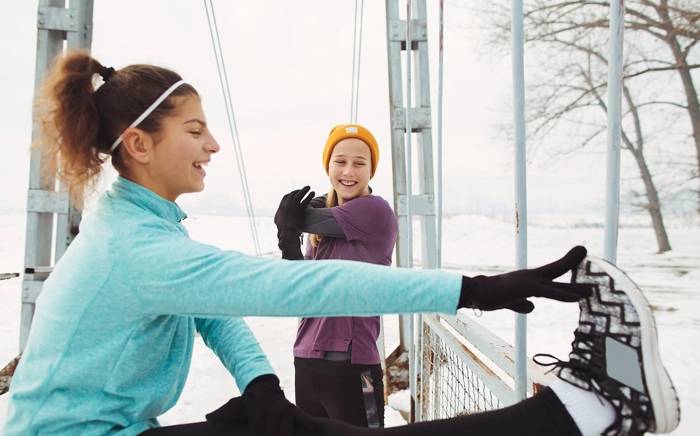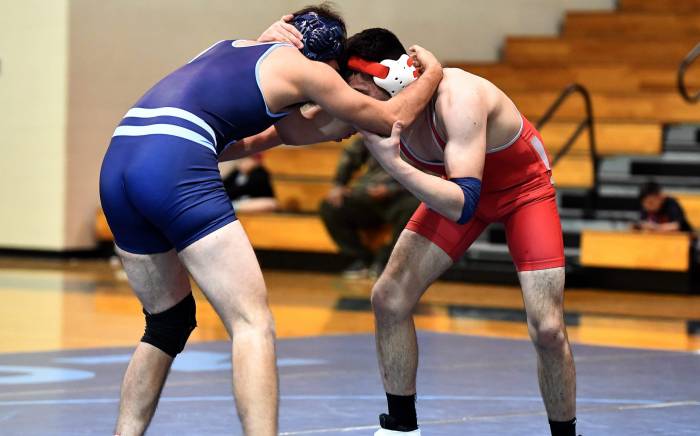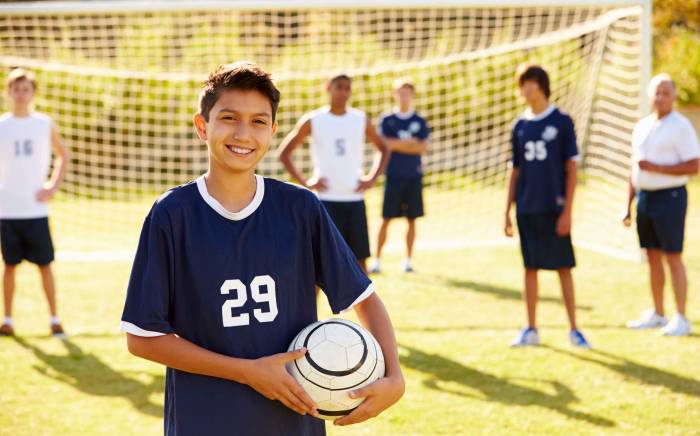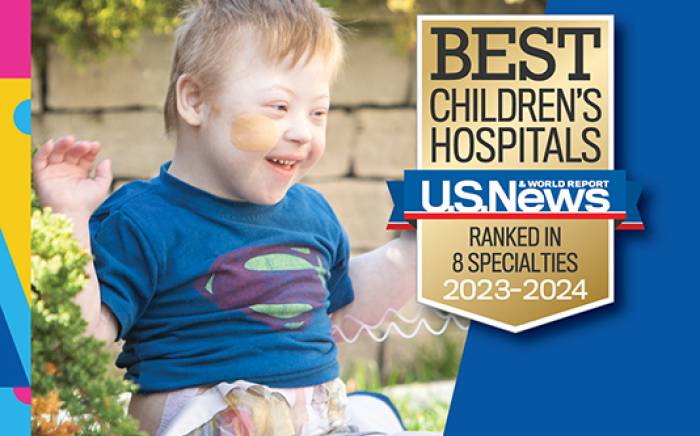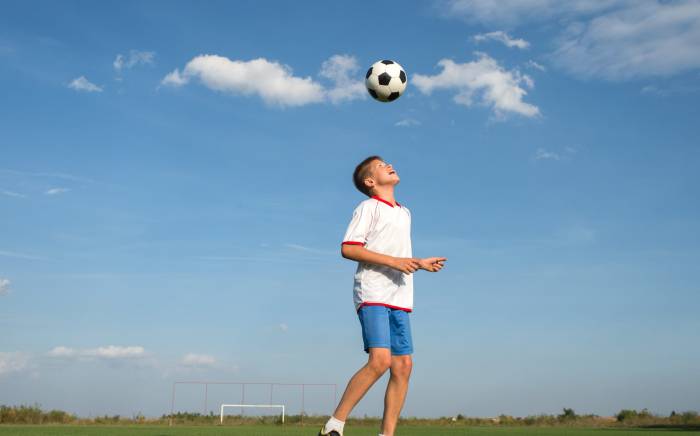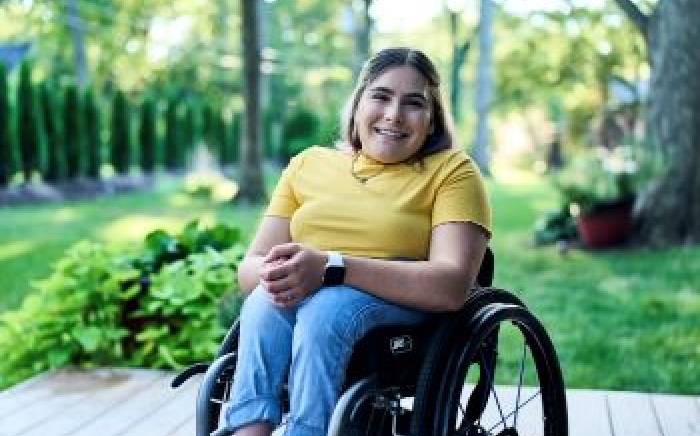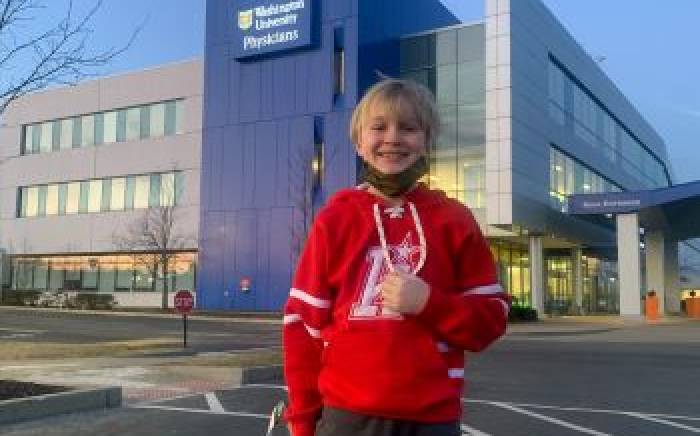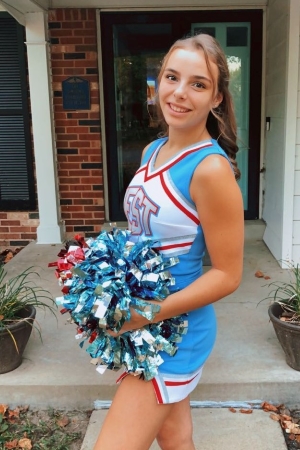 When Nina Simpson was 5, her mother enrolled her in a gymnastics program hoping to channel her endless energy.
When Nina Simpson was 5, her mother enrolled her in a gymnastics program hoping to channel her endless energy.
It was love at first somersault.
Nina says she’s happiest in the gym, where she has trained as a competitive gymnast and cheerleader. “When I’m there, I don’t have to think about anything else in the world.”
So, when a rare knee condition, osteochondritis dissecans (OCD), threatened to take her away from the gym, bring an end to her dreams of competing in college — and make simply walking difficult — the Washington University and St. Louis Children’s Hospital Young Athlete Center (YAC) was there to help.
With care from the YAC team, including highly specialized surgery and an individualized rehabilitation plan, Nina, 17, is back on track to return to her nationally recognized cheer team and looking forward to fulfilling her dream of cheering on a Division I college team.
Nina has always been an athlete and competitor. It runs in the family. Her mother, Julia, was a high school diver and currently a fitness instructor and registered nurse. Her father, Todd, was competitive high school swimmer who went on to be a Navy Rescue Diver and swim on U.S. Masters teams.
Todd is a U.S. Navy officer, so the Simpsons moved frequently when Nina was younger. While living in Hawaii, Nina, then about age 11, competed at level 7 (advanced) with a competitive gymnastics team — the Hawaiian Island Twisters. At age 13 she changed sports from gymnastics to competitive cheerleading and auditioned for Island Elite Cheer, where her drive and hard work led her to be part of a team that won titles across Hawaii and the continental U.S.
When, the family moved back to St. Louis, her parents’ hometown, Nina enrolled at Parkway West High School.
Though she had never dived competitively before, she made the school’s diving team. Her gymnastic skills translated well to her new sport. “She just had to learn to land on her hands going into the pool, instead of her feet,” says her mom.
She qualified for the state diving competition her freshman year.
Nina also joined ICE Cheer, a Midwest-based gym and national competitive cheer powerhouse.
Cheer is a rigorous discipline combining gymnastics skills, dance moves and stunting (moves like pyramids, tosses and jumps). Teams perform complex routines with the athletes just inches apart.
Nina made the ICE Level 6 Aftershocks team, which has regularly qualified to compete at the prestigious WORLDS Championships in Orlando, Florida.
But she was bothered by persistent knee pain that had worsened over several years.
Nina went to the St. Louis Children’s Hospital YAC to have it checked out. It was the best place she could have gone.
Nina was seen by Washington University orthopedic surgeon and pediatric sports medicine specialist Jeffrey Nepple, MD, MS. In addition to being the YAC director, Dr. Nepple is an expert in OCD and belongs to Research in OsteoChondritis of the Knee (ROCK), a national network of specialists that researches and shares best treatments for knee ailments like Nina’s.
He diagnosed Nina with OCD of the patella (kneecap). This uncommon condition affects part of the cartilage and bone in a joint, most often the knee. In severe cases like Nina’s, this can result in the cartilage crumbling away over time. OCD has no clear cause, but repetitive stress, like tumbling and jumping, can exacerbate it.
“OCD is a great example of a relatively rare problem that as specialists in pediatric sports medicine at the YAC, we see and treat all the time — from the simple cases to more complex ones like Nina,” he says.
“Nina was missing a large portion of kneecap cartilage, leading to pain, swelling and grinding in her knee that were making it impossible to continue competing” Dr. Nepple says. Eventually, she would have developed osteoarthritis in her knee.
Nina needed surgery if she ever hoped to compete in cheer again.
“The goal of our surgery was to replace the large, damaged portion of the cartilage in Nina’s patella,” says Dr. Nepple. “The defect was too large to fix with her own cartilage, so she was treated with a fresh osteochondral (bone and cartilage) transplantation.”
This procedure uses living cells from a deceased donor (allograft) to fix the patient’s knee.
“We had a great solution to a very difficult problem. We implanted a large plug, about 2 centimeters, of bone and cartilage to replace the area affected by the OCD. The plug is ‘press-fit’ into the precise hole we create, so it doesn’t require any screws to hold it in place. Over time, the bone heals together and this living cartilage has allowed her to essentially have a normal teenage knee again.” Dr. Nepple says.
Nina had this highly specialized outpatient surgery at the St. Louis Children’s Specialty Care Center (CSCC) - West County, in July of 2020 when transplant graft tissue became available. She started rehab with physical therapist Theresa Coverick days later at the YAC.
From the start, Coverick and Nina “clicked” as a team.
Coverick was a young athlete herself, competing in soccer, cross country and track and field in high school and running track and cross country in college. Her interest in physical therapy and sports injury rehab began in high school and she eventually earned a doctorate in physical therapy.
Studies have shown that about 70% of athletes who undergo the type of surgery Nina had return to sports, says Coverick. Nina was determined to be one of those.
“She will not take no for an answer, and she will make sure that she is not only an athlete that is able to return to her sport but an athlete that will return better and stronger than she was before,” says Coverick. “My goal is to help her achieve exactly that!”
Nina worked twice a week with Coverick on restoring muscle strength and range of motion. The other five days of the week, she worked on exercises at home.
“Theresa really pushed me to do a little more each day,” Nina says. “It was a real workout. You could be very sore afterward. But each time I could measure a degree more movement, it was a win.”
Coverick says that Nina’s work ethic and positive attitude make her a stellar patient.
“Nina works harder than just about anyone you’ll find when it comes to school, cheer, work (she coaches both cheer and gymnastic) and her physical therapy,” Coverick says. The hard work helped her progress from not being able to bear weight on her right leg after surgery to easing back into her cheer skills, says Coverick.
“She was giddy to show me that she stuck her roundoff back handspring into back layout with a twist —if I’m getting that right,” she says.
Ironically, because of the COVID-19 pandemic, resulting lockdowns and cancelled competitions, surgery and a year of recovery and rehab didn’t sidetrack Nina’s career goals.
“Not to say that there was anything good about the pandemic,” says her mom, “but if Nina had to take a gap year, this was the one to do it.”
Now a year after her surgery, she returned to her pre-injury form with a pain-free knee and the help of Dr. Nepple and Coverick at the YAC.
As a result, she’s still planning to compete in national cheer competitions and cheer of a Division I college (hopefully Mizzou). And she’s added one more goal to her list: become a physical therapist to help athletes just like her.




